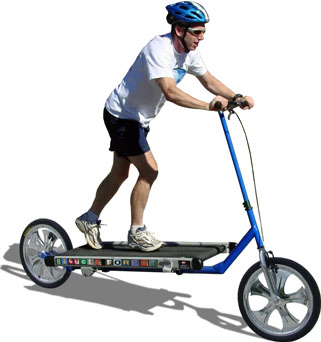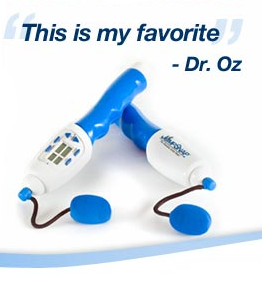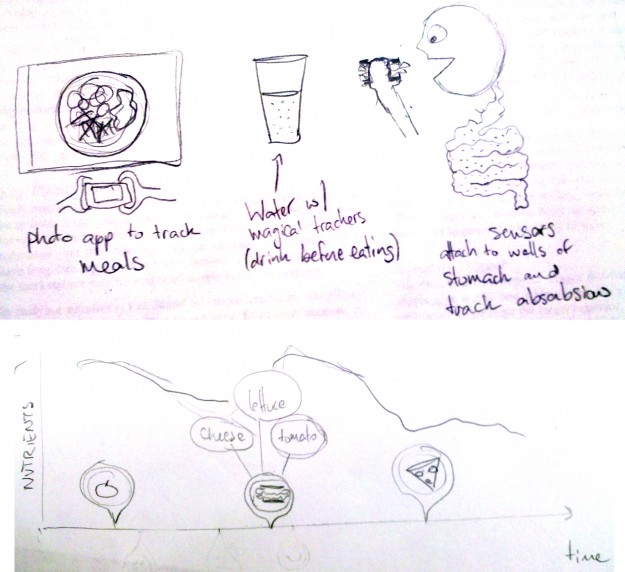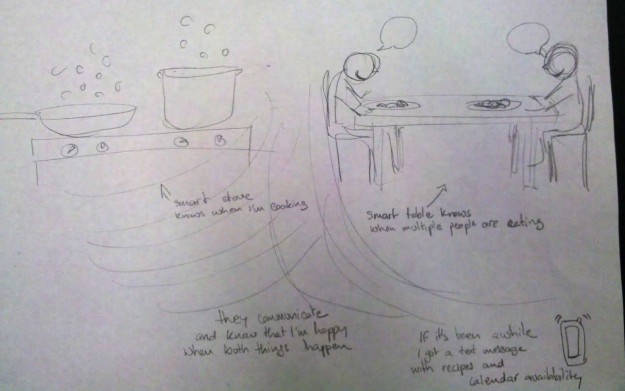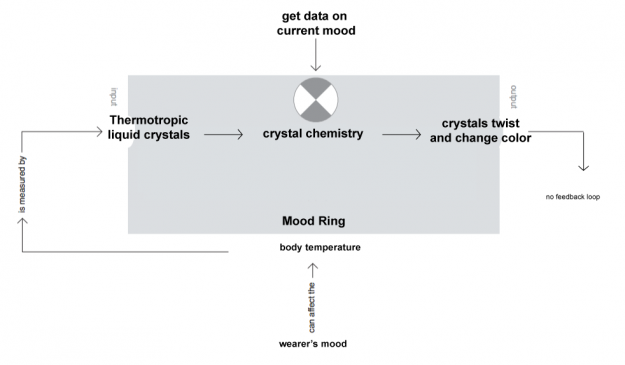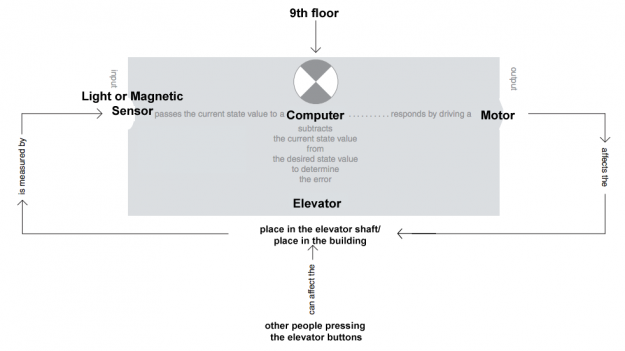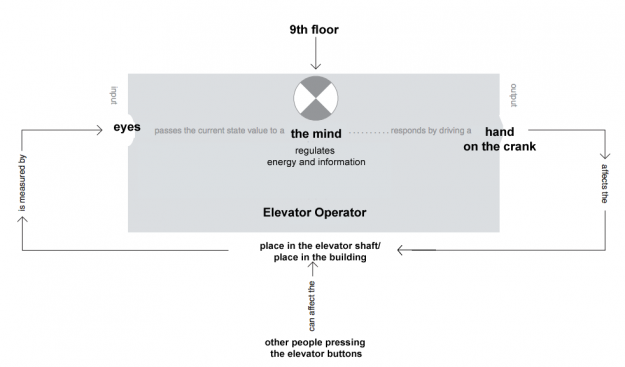My random notes and process over the last few weeks in trying to figure out my final project proposal.
Update from 10/26
Social Interactions
Everyone is awkward, I know this. But, some times I feel more awkward than others. Talking to people in social situations can be difficult for me. What do I say? When is the right time to speak? How do I know if what I say matters? What if I don’t have an appropriate story to tell or question to ask? What’s wrong with silence in a conversation?
Being sociable is an expectation that people have.
Speaking in social situations can be difficult for me. It has been something I’ve been working on for as long as I remember, but much more aggressively in the past few years. I was and am usually still known as a quiet or shy person. While I am very comfortable being this way, I’ve learned that there are many good reasons to be more talkative.
- It allows people to get to know me better
- People are genuinely interested in what I have to say
- It allows others to enrich my own thoughts and feelings and existence
- Some people perceived my quietness as stuck up and judging
- Some have confessed that it can feel like pulling teeth to have a conversation with me (this was a few years ago)
In the last few years, here are a few things I have done to work on this:
- started attending psychotherapy sessions to better understand why I am this way and what my barriers are
- enrolled in improv comedy classes, to learn skills in thinking and participating on the spot
- observing then embodying others who I recognized and admired as charming conversationalist (ie- “how would Liz approach this situation?”)
(
one random conversation with a person
one meaningful conversation with a person
)
Possible goals for this system:
- talk more to people, new people, and people I already know
- have more meaningful conversations with people
Sensors:
- log conversations that I have throughout the day
- rate them on different scales (maybe just one scale: the conversation, how i felt about it, what effort did I put into it)
Actuation:
- adjust approach for next conversation
Walking Game
why:
- walk more
- stop and notice my surroundings
- are these conflicting?…
- journey over the destination
is this health related?
trails as transit
pacman-like – people are trying to get you, you pick up pellets on the streets by walking by
what can you use the pellets for?
concerns: sharing people’s location
there can be ‘treasures’ so you walk around, when you want a goal, it’ll find a treasure for you to hunt for… (what is a treasure…, what would be relevant here?)
treasures are surprises until you get there: new historic fact, landmark buildings, a friend’s house, best place to be when…sunsets,
what would make you come back… if you’re friends are participating…you see their treasures…
goal: to cover as much ground as possible, new places to walk by
new destinations, new journeys
walking game + betherenyc?
othello, take over spaces, build an army
what are the pellets for?
you have to collect all the pellets
What about on lunch breaks.This is a great time to stroll.
Take a lunch break and go for a walk.
new journeys.
collect all pellets as you can on your break…
it’s a like a maze game…
a new maze each time, new streets to visit
what did you find? share it… save it…
It knows when you’ve been at one place for a while and can ping
Having a dog could be the motivation for doing this lol
The Data Journal
Goal: to learn something about myself through data.
How: build a system that will facilitate the mashups for data and then draw conclusions
We have different devices tracking our data. How can we see them in relationship to one another? I want to be able to overlap all my data points and pull out slices for analysis. Better yet, the system could make correlations and alert me.
Linguistic analysis of twitter feeds and facebook feeds for contextual information.
location data
workout data
sleep
etc.
Update from 10/25
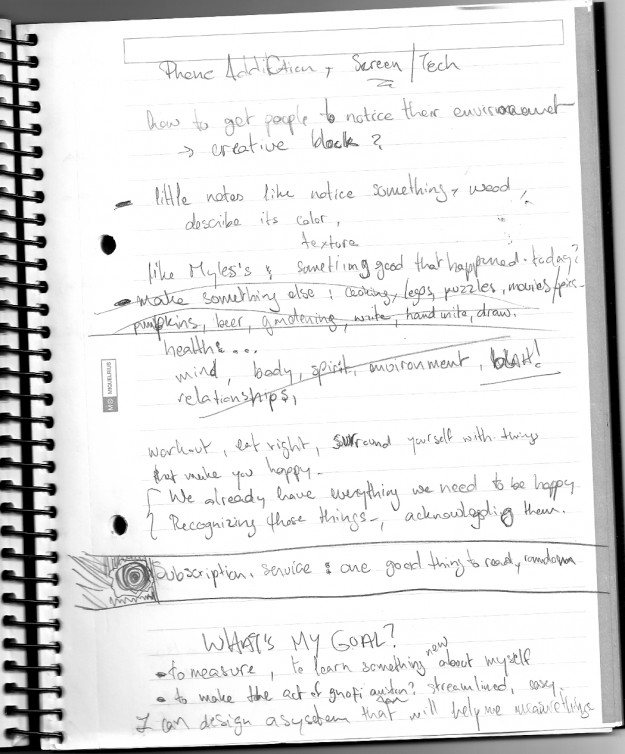
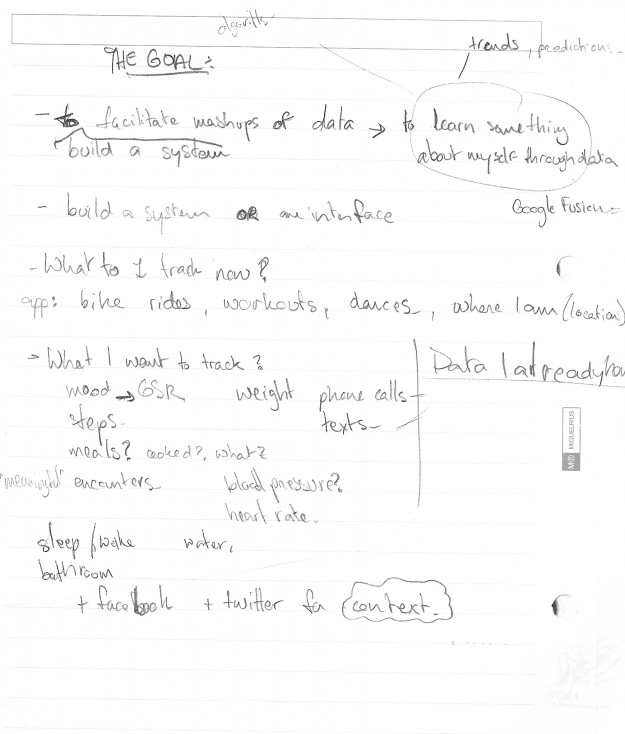
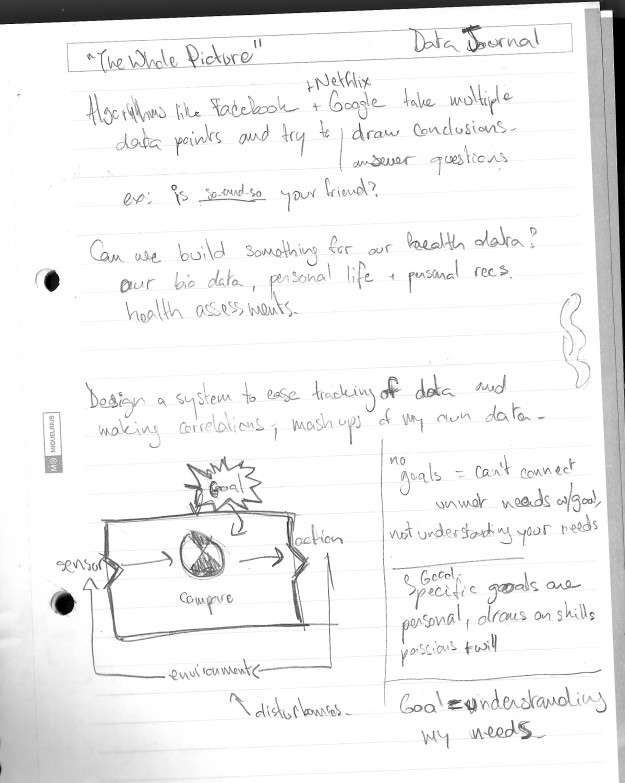
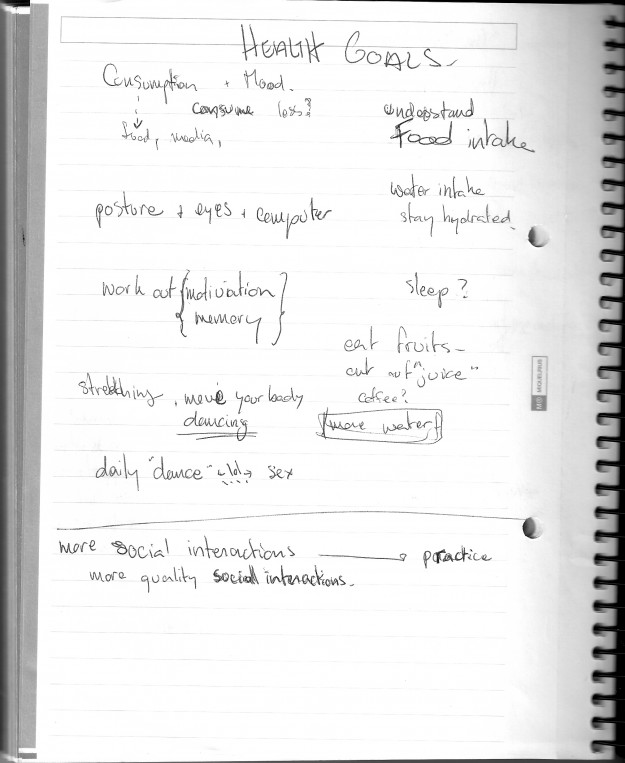
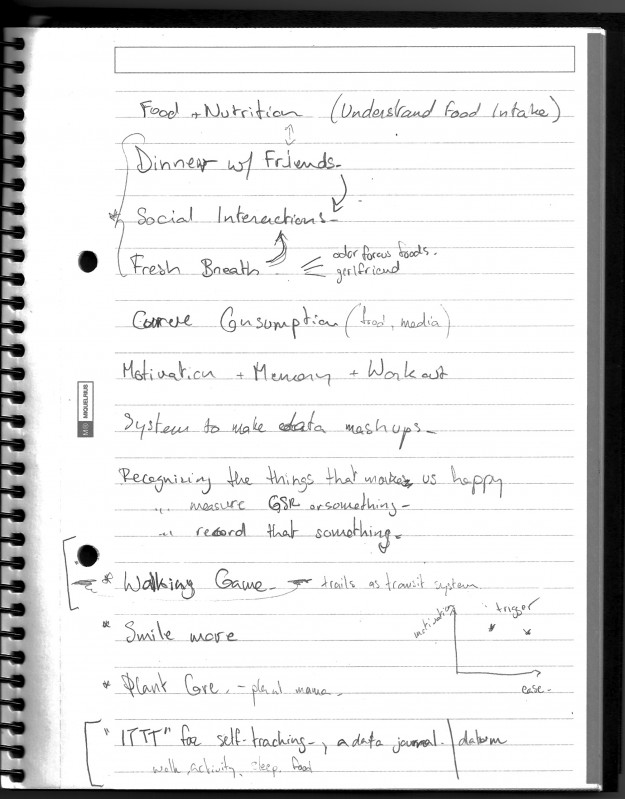
Update from 10/22
Foods in season, learn new ways to use _______
Group meals (potluck)
Community
Teach each other
Why dont i have a million cookbooks.
Foods in new ways, sharing with people
how about dancing?
as healthful experience
Phone addiction? Less screens
Riding on the train. It goes outside. People check their phones instead of noticing outside
People dont care?
Phone is more interesting
All the feedback loops, behavior rewards, etc…
Who to make our environment more sexy, appealing
Phone is an escape from our environment.
Try to move faster
Update from 10/21
dan ariely
http://danariely.com/2010/07/05/a-crisper-solution/
http://danariely.com/2010/06/26/save-your-own-life/
http://www.freakonomics.com/2008/07/24/keep-the-cheap-wine-flowing/
http://www.people.hbs.edu/mnorton/ariely%20norton%202009%20hbr.pdf
vegetables as “wine”
rirkrit tiravanija
food trucks
sva breakfast for kids
* How do you define health (and self-care) for you?
filling the mind + body + spirit with things are good for them
doing things that make the mind, body, spirit, relationships, environment happy.
mindfulness
balance
* What’s important to you about your health?
mind+body+spirit (epiphany within the last few years)
nutrition (a food epiphany within the last year)
moving my body
healthy relationships with my partner, my family, friends
* What do you want to work on that improves your health?
walking more
cooking more (building a better relationship with food. understanding them, not taking it for granted)
reminding myself that i actually love to workout so i should do it (i’m missing the trigger to get this behavior to happen… maybe group support is the trigger… weekly commitment, etc…)
* What does a healthy moment (or day/month/year) look and feel like to you?
yoga and/or some vigorous workout, for burning energy and building focus
playing team sports, for camaraderie and burning energy
genuine quality time with my partner where we get to know each a little deeper
quality time with long time friends
a delicious homemade meal made with fresh organic foods all “farm-to-table” shared with others
waking up early without an alarm
dancing to great soul-moving music
* What behavior do you want to change?
make time for walking
preparing meals at home
would like to try veganism at some point
Look at these different components of a person’s health and well-being.
* Body
* Mind
* Relationships
* Money
* Work
* Environment
* Happiness
Are there any that are missing?
I would add “spirit”
It involves happiness, but also attitudes, beliefs, values
The rules by which we view and interact with our environment, with all the above.
What do you already do in terms of self-care for each of these components?
Mind –
bicycling – mental break, new activity, fresh air, movement, taking myself from one place to another, self-propelled travel
Walking
Body –
nutrition, being mindful and selective about what i eat
Bicycling – human powered travel
Planned walking dates
Relationships
Quasi regular date nights with partner
Phone chats with mom and dad, visits every 1-2 months
Environment
Working on making our home the way we want
Going out for fresh air
Work
Stretch while working
Happiness
cupcakes
What do you wish you could do more of?
moving meditation and controlled breathing, break from life,
Be more involved in my sisters lives more, and them involved in mine
prepare meals at home
take long walks (not necessarily for leisure)
commute by bicycle more
And what don’t you do but wish you did?
Have people over to hang out, or hang out at other peoples home
check in with old friends
workout alone first thing in the morning or every evening with a group of people
budget and plan out a school work schedule
What kind of experiences might you create that would inspire you to be as healthy as possible?
some kind of trigger for getting a workout in and reminder of how I’m going to love it.
a way to track nutrition intake against a recommended daily/weekly intake and meal suggestions for fulfilling those recommendations (simple example: you could use more potassium, have a banana)
regular gatherings or just chats with friends and family
foodmood?
everything is a workout? (sort of like nike fuel…)
reminder of how awesome working out is
a way to track nutrition intake
mood tracking (mood + gps + food?)







